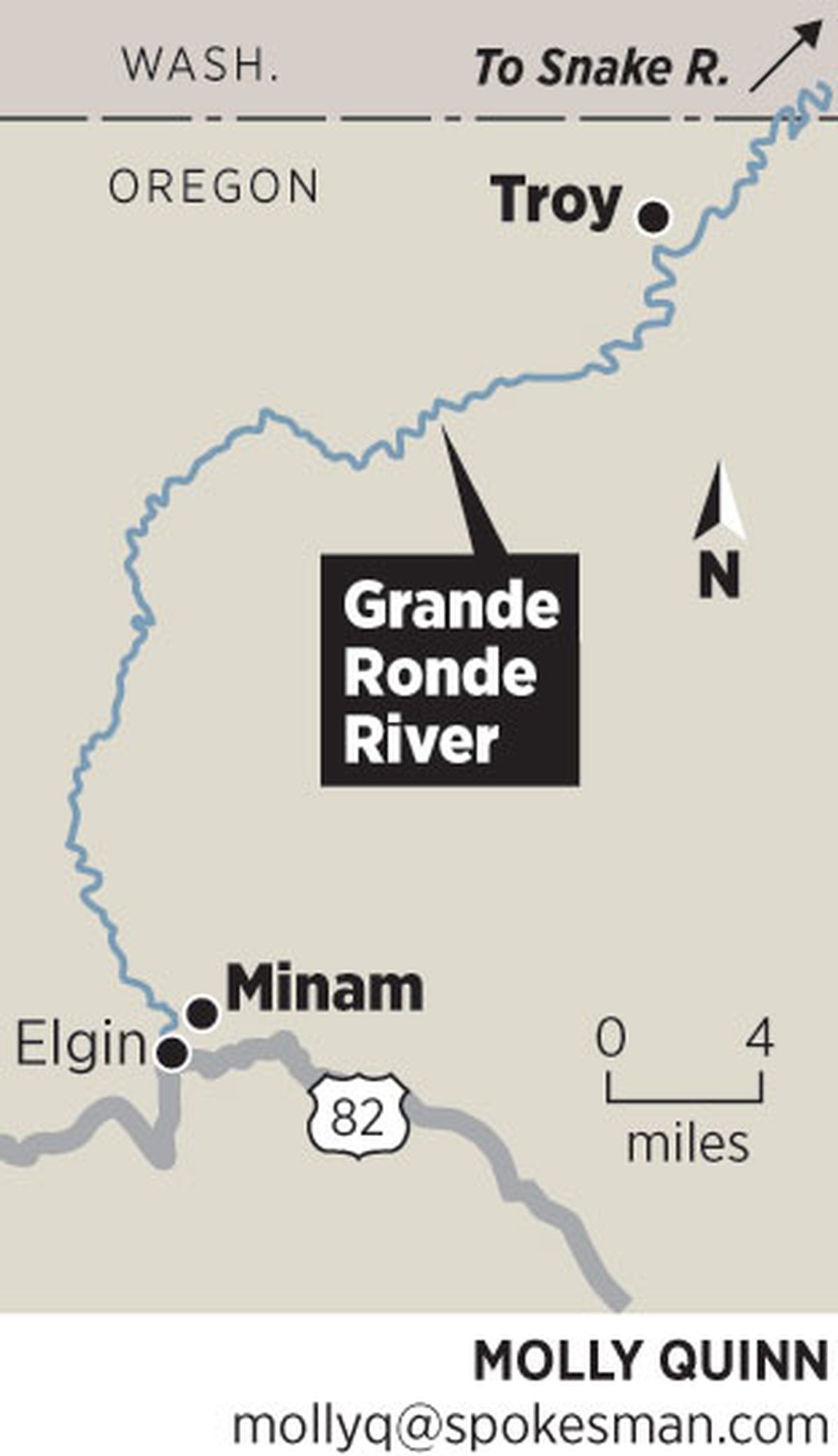Whitewater, canyons, wildlife on Oregon’s Grande Ronde River

A bald eagle, with its classic white head and tail, cruised effortlessly through a hallway of evergreens along the river, immediately catching the attention of rafters at camp during a May float trip on the Lower Wallowa and Grande Ronde.
Everything about the 40-mile adventure on a wild-and-scenic river system in northeastern Oregon is relaxing, from wildlife watching to camping to morel picking.
The float on the Wallowa and Grande Ronde rivers attracts boaters from across the Northwest for its beauty, but also because you don’t have to plan months ahead to run the rivers.
The run is one of only a few multiday, wild-and-scenic and wilderness rivers in the West where you don’t have to fill out an application in winter and hope to get a permit in a lottery.
Just go for it when you feel like it.
A few other spur-of-the-moment rivers are the Owyhee, Snake in lower Hells Canyon (below Pittsburgh Landing) and the Lower Salmon. All boaters need to do is fill out a self-issue permit at the launch and follow the rules.
The Wallowa and Grande Ronde rivers also make a great family trip or a float for youth groups.
OK, let’s not forget the beautiful campsites and hiking through forests and open canyon slopes. Veteran river runners, who want time off from white-knuckled whitewater floats to do more camping and hiking than rowing, also make it an annual trip.
“The Grande Ronde is one of my favorite Oregon rivers,” said Charles Ray, a rafter and fisherman from McCall. “This river has it all – free flows, lots of wildlife, stunning scenery and geology, several distinct vegetation types, nice campsites and very good steelhead fishing.”
While the scenery is great, don’t totally take your eyes off the river. The float is spiced with some Class II -III (beginner- to- intermediate-level) rapids, just enough to get the kids excited or to make it a whitewater classroom.
After making that spur-of-the-moment decision to run it, most rafters put on the Lower Wallowa at Minam, along Oregon 82 between La Grande and Joseph.
They take out at the Powwatka Bridge or the Mud Creek access, about 7 miles before the remote burg of Troy, Ore.
You can do the whole run for 91 miles to the Snake River, but that will require at least a five-day commitment. It’s worth considering because sections of that part of the river go through desert canyonlands with bighorn sheep.
But floating the shorter stretch can be done in a long weekend, which is another important consideration.
A lot depends on flows, but the time is right now with medium flows conducive for most whitewater boats. The Wallowa River is still being fed by abundant snowmelt of the Eagle Cap Wilderness in the Wallowa Mountains, and the Grande Ronde is getting its runoff from the Elkhorn Mountains northwest of Baker City.
The rivers will get lower as the summer progresses and will be good for canoes, kayaks, inflatable kayaks and smaller rafts.
Several other rivers feed these watersheds along the way in a place that Native Americans called Land of Winding Waters.
Those waters take rafters through steep basalt canyons that rise 3,000 to 4,000 feet above the river.
The rivers flow past dense evergreen forests, and in some places where there is no road access.
As you relax and float along, watch for elk, deer, osprey and, yes, bald eagles.
Binoculars are almost as important as your oars, except when you’re negotiating those straightforward Class III rapids.